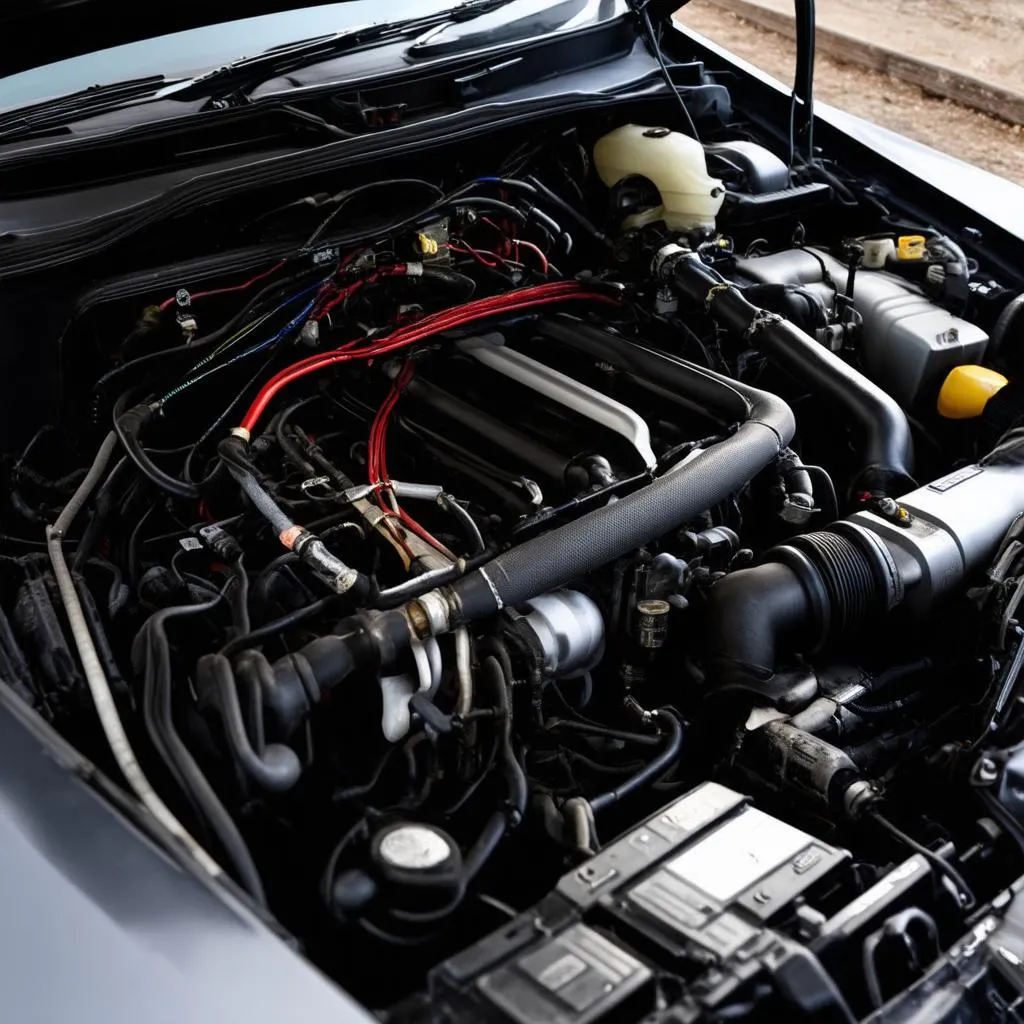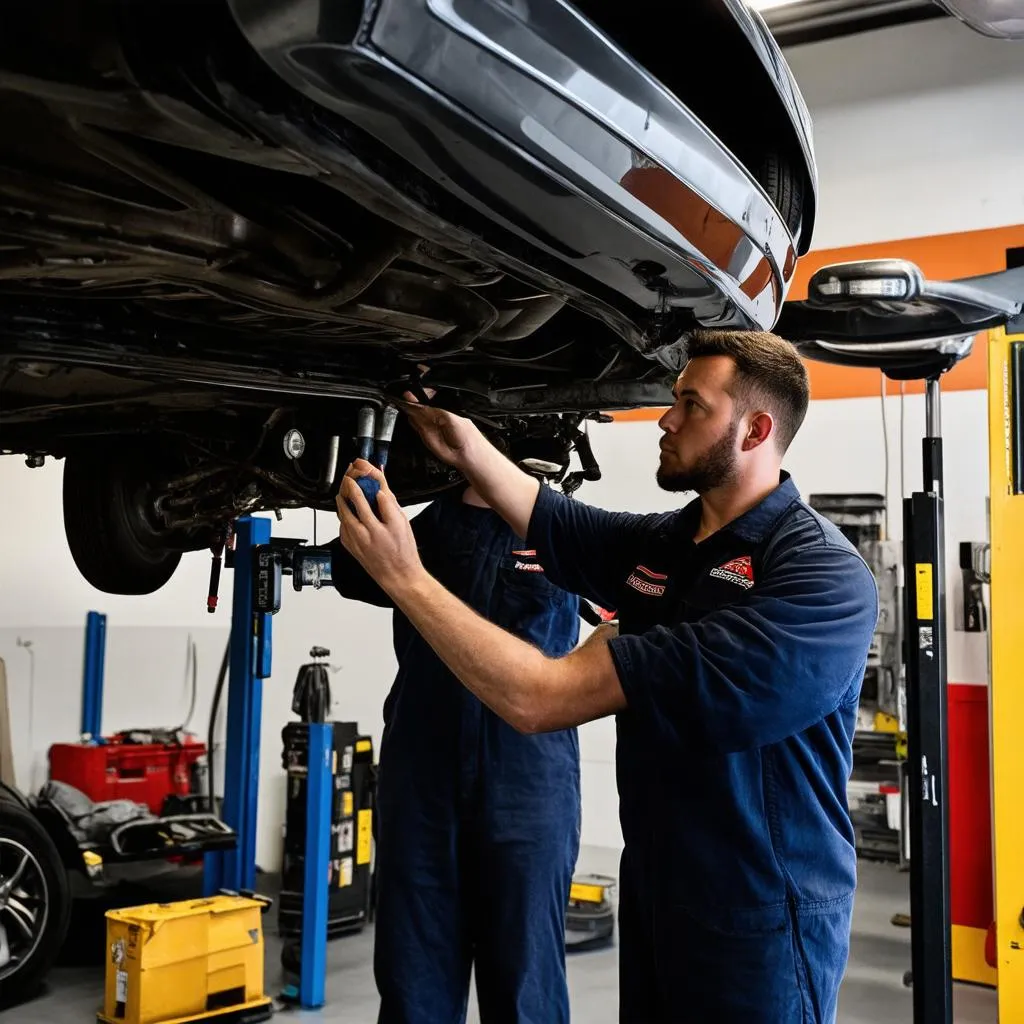“My check engine light just came on, and this code popped up. What does it mean?” Sound familiar? We’ve all been there, staring blankly at our Chrysler’s dashboard, wondering what cryptic message the universe is sending. Today, we’re deciphering one such message: the dreaded P0128 code.
What Does P0128 Mean?
In a nutshell, the P0128 code indicates a coolant thermostat problem. Think of your car’s engine as a hardworking athlete. Just like athletes need the right temperature to perform at their best, your engine relies on the cooling system to maintain an ideal operating temperature. The thermostat is the gatekeeper of this system, regulating the flow of coolant to keep things from getting too hot or too cold.
When your Chrysler throws a P0128 code, it’s basically saying, “Hey, my engine isn’t reaching the optimal temperature quickly enough.” This could be due to several reasons, which we’ll delve into shortly.
Decoding the P0128 Code: Causes and Symptoms
So, what could cause your Chrysler to flag a P0128? Let’s investigate some common culprits:
1. Faulty Thermostat
Just like a rusty gate, a malfunctioning thermostat can get stuck, preventing the proper flow of coolant. This is often the primary suspect in a P0128 case.
2. Low Coolant Level
If your coolant reservoir resembles a desert landscape, it’s time for a refill! Low coolant levels can disrupt the cooling system’s delicate balance, triggering the P0128 code.
3. Faulty Coolant Temperature Sensor
Imagine a thermometer giving you inaccurate readings. A faulty coolant temperature sensor can mislead your Chrysler’s computer, leading to a false P0128 alarm.
4. Wiring Issues
Sometimes, the problem lies not with the components themselves but with the communication lines between them. Damaged or corroded wiring can disrupt signals, causing confusion and triggering codes.
Symptoms Beyond the Dashboard Light
While the check engine light is a clear indicator, your Chrysler might exhibit other symptoms when grappling with a P0128 code, such as:
- Fluctuating temperature gauge: Notice your temperature gauge doing the cha-cha? This inconsistency could point to a coolant system issue.
- Engine overheating: Ignoring a P0128 code can lead to dire consequences, including engine overheating.
- Poor fuel economy: When your engine isn’t operating at its prime, it can guzzle fuel like a thirsty traveler in the desert.
Taming the P0128 Beast: How to Address the Issue
Now that we understand the enemy, let’s equip ourselves with the knowledge to defeat it:
1. Check the Coolant Level: This is the first line of defense. Pop open the hood (when the engine is cool, of course!) and check the coolant reservoir. If it’s low, top it up with the recommended coolant type.
2. Inspect the Thermostat: A visual inspection of the thermostat can reveal telltale signs of damage or corrosion. If it looks suspect, it’s best to replace it.
3. Test the Coolant Temperature Sensor: This requires a bit more technical know-how. If you’re comfortable with a multimeter, you can test the sensor’s resistance. Otherwise, it’s best to leave this to the professionals.
4. Seek Professional Help: If you’re unsure about any step or if the problem persists, don’t hesitate to contact a qualified mechanic.
 Car engine
Car engine
FAQs: Unraveling the P0128 Mystery
Q: Can I still drive my Chrysler with a P0128 code?
A: While technically possible, it’s not recommended. Driving with a P0128 code can potentially lead to further engine damage and costly repairs down the line.
Q: How much does it cost to fix a P0128 code?
A: The cost can vary depending on the root cause and your location. A simple thermostat replacement might be a budget-friendly fix, while a more complex issue could require a heftier investment.
Q: Can I use a universal OBD II scanner to diagnose a P0128 code?
A: Yes, a universal OBD II scanner can read the P0128 code. However, for a more in-depth diagnosis and access to manufacturer-specific codes, a dedicated Chrysler scanner is recommended.
Related Questions: Expanding Your Automotive Knowledge
- What are common Chrysler engine codes?
- How do I reset my Chrysler’s check engine light?
- What are the symptoms of a bad thermostat?
- How often should I flush my Chrysler’s coolant?
Products to Conquer the P0128 Code
- Chrysler-compatible OBD II scanners
- High-quality thermostats
- Coolant temperature sensors
- Coolant flush kits
Chrysler Models Affected by P0128
The P0128 code can rear its head in various Chrysler models, including:
- Chrysler 300
- Chrysler Pacifica
- Chrysler Town & Country
- Dodge Charger
- Dodge Challenger
- Jeep Grand Cherokee
- Ram 1500
Seeking Expert Guidance? We’re Just a Text Away!
Feeling overwhelmed by the intricacies of your Chrysler’s cooling system? Fear not, fellow car enthusiast! Our team of automotive gurus is here to guide you every step of the way. Contact us via WhatsApp at +84767531508 for expert advice, troubleshooting tips, and assistance with finding the right tools and resources to conquer the P0128 code.
 Mechanic working on a car
Mechanic working on a car
Keep Your Chrysler Cool and Your Mind at Ease
Remember, early detection and prompt action are your best allies when it comes to car maintenance. By understanding the language of your Chrysler’s OBD II codes and seeking professional help when needed, you can keep your chariot running smoothly for miles to come.
Do you have any experiences with the P0128 code or other automotive mysteries? Share your stories and questions in the comments below – let’s keep the conversation rolling!